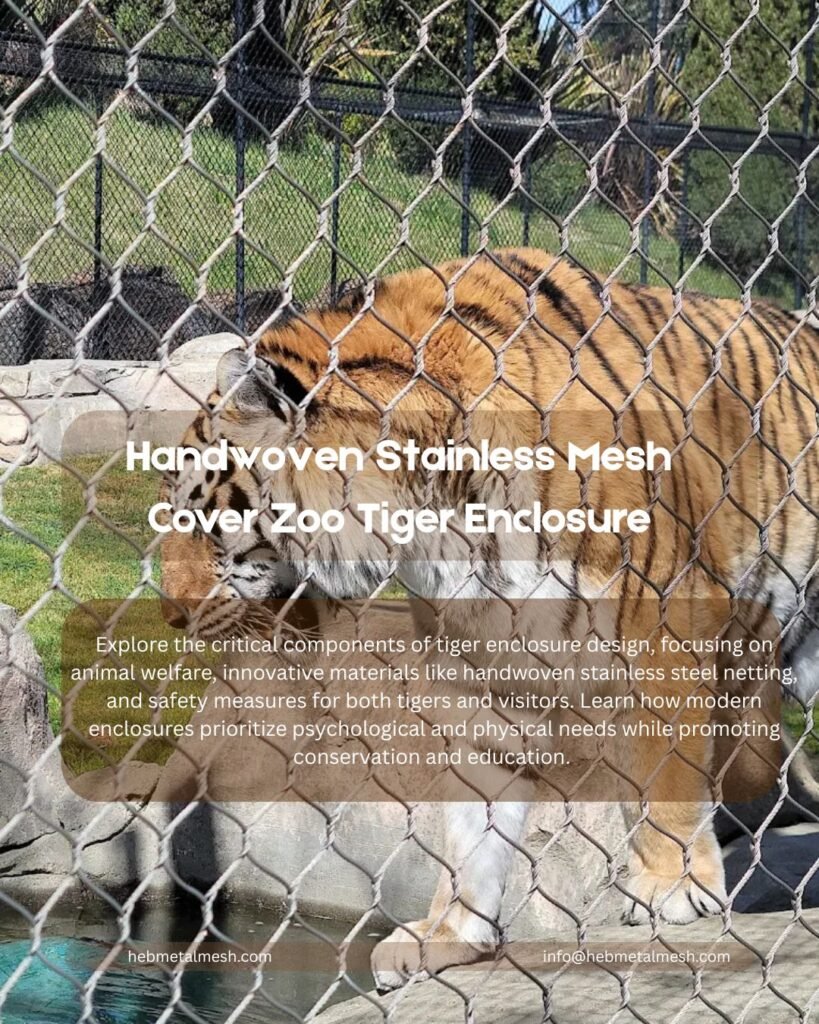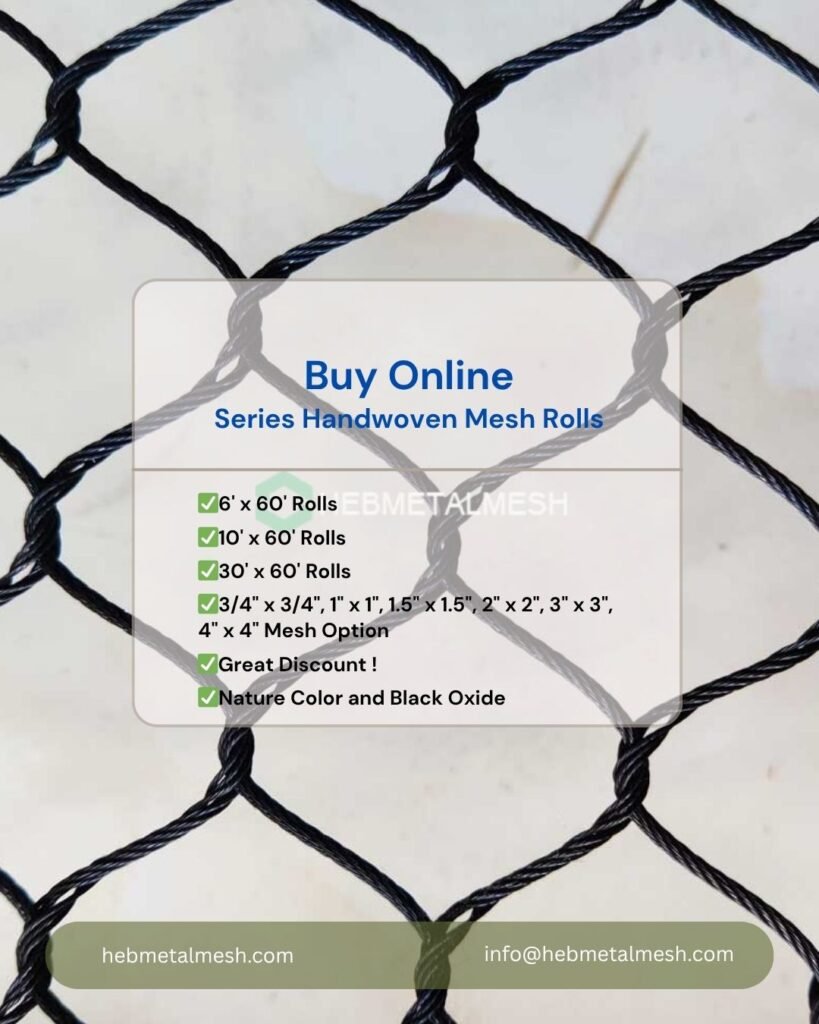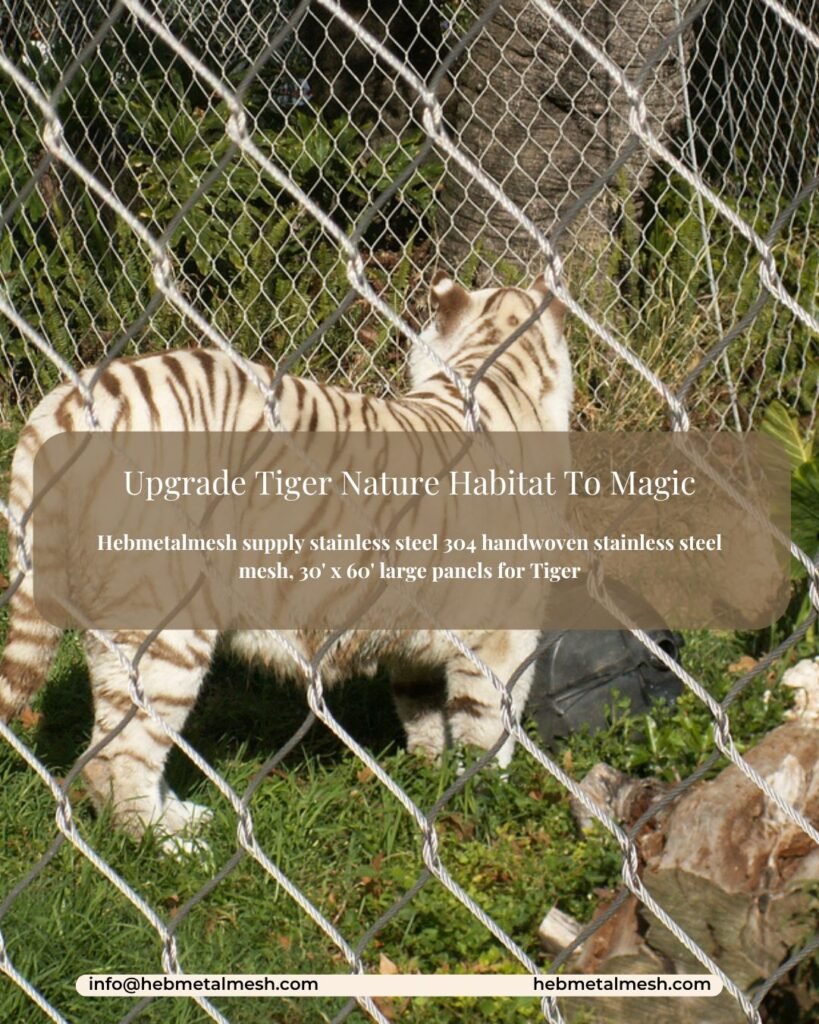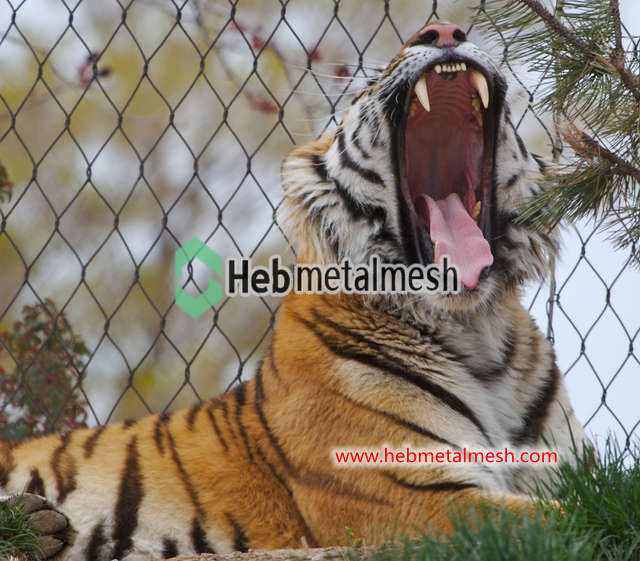Introduction to Tiger Houses
Tiger houses serve as crucial enclosures designed to provide safe and secure habitats for these magnificent apex predators within zoos and wildlife parks. The fundamental purpose of tiger houses is to mimic the natural environments in which tigers thrive, ensuring that they can exhibit their innate behaviors while being safely contained. This is essential not only for the well-being of the tigers but also for the safety of visitors who come to observe these powerful animals.
As one of the most revered species in the animal kingdom, tigers require specialized enclosures that prioritize both their physical and psychological needs. Effective tiger house design takes into account various factors, such as space requirements, environmental enrichment, and secure barriers. The enclosures must be sufficiently spacious to allow tigers to roam freely, engage in natural hunting movements, and explore their surroundings, which contributes to their overall health and happiness.
In recent years, the growing emphasis on safety measures has become paramount in the design of tiger houses. Innovative solutions that integrate advanced materials are being deployed to ensure that these majestic animals cannot escape while also protecting visitors from any potential risks. The use of handwoven stainless steel netting represents a significant advancement in this regard, as it not only provides a durable and robust barrier but also maintains a transparent vantage point, enhancing the viewing experience for guests.
The importance of rigorous safety standards cannot be overstated, particularly considering the potential hazards associated with tiger encounters. As such, tiger houses are continually evolving, driven by the dual goals of animal welfare and visitor safety. This careful balance ensures that the magnificent creature can be appreciated while safeguarding their natural behaviors in a secure environment.
The Design and Construction of Tiger Houses

Designing and constructing a tiger house encompasses numerous critical factors aimed at ensuring the well-being of these magnificent creatures while also providing an engaging experience for visitors. One of the primary considerations is the spatial requirements necessary for tigers to thrive in captivity. Ideally, a tiger house should offer ample indoor and outdoor space, allowing for natural behaviors such as roaming, climbing, and exploring. The size of enclosures must be carefully calculated based on the number of tigers, their age, and social dynamics to prevent stress-induced issues.
Habitat simulation is another essential element in tiger house design. The structure should incorporate features reminiscent of a tiger’s natural environment, such as foliage, water bodies, and climbing structures. This approach not only encourages the animal’s instinctual behaviors but also enhances the overall aesthetic appeal for visitors. Implementing an environment that closely mimics the tiger’s wild habitat contributes to their mental well-being, which is a vital aspect of responsible captive management.
An additional consideration is the integration of viewing areas for guests. A well-designed tiger house should offer safe vantage points that allow visitors to observe tigers without disrupting their natural behaviors. Strategically placed viewing galleries or glass panels can offer an immersive experience while ensuring the safety of both the animals and the audience. This dual focus on visitor engagement and animal welfare is critical in the modern context of wildlife management.
The construction phase presents its own set of challenges, especially when it comes to utilizing materials that are durable yet safe for tigers. Innovative solutions, such as handwoven stainless steel netting, are increasingly being used. This material is not only robust but also allows for visibility and airflow, which further aids in creating a comfortable environment for the animals. Careful planning and execution during the construction phase are paramount to the success of any tiger house project.
Safety Concerns in Tiger Enclosures
The safety of both tigers and humans in captivity is a paramount concern in the design and construction of tiger house enclosures. In recent years, several incidents in zoos and sanctuaries have highlighted the substantial risks involved. Tigers, being apex predators, possess instincts that can lead to aggressive behavior if they feel threatened, which raises concerns of potential harm to visitors or caretakers. The implementation of robust safety measures is vital in mitigating these risks and providing a secure environment.
One of the main risks arises from inadequate enclosures that fail to meet the physical and psychological needs of tigers. When tigers are housed in facilities that do not allow for proper stimulation or promote natural behaviors, the stress can lead to unpredictable actions. These scenarios not only pose a threat to visitors who might inadvertently provoke the animals but also jeopardize the tigers’ well-being. Thus, a comprehensive approach to enclosure design is essential to balance safety and the animals’ health.
Furthermore, there have been numerous incidents where human error resulted in dangerous situations. For example, breaches in safety protocols or faulty enclosure structures can lead to dire consequences. High-profile cases have shown that even small oversights can unleash a cascade of events leading to escapes or injuries. As such, implementing rigorous protocols and utilizing innovative design solutions are crucial in addressing these concerns.
One effective method of enhancing safety is through the use of advanced materials, such as handwoven stainless steel netting, which provides both durability and visibility. This not only protects the tigers from escaping but also allows observers to view them without compromising safety. Overall, the design of a tiger house must prioritize safety and prepare for unforeseen challenges while ensuring the well-being of the animals. Proper measures can indeed make the difference between securing a safe environment and an unfortunate incident.
Innovative Netting Solutions: A Focus on Handwoven Stainless Steel

In the design and construction of tiger houses, safety is paramount; thus, adopting innovative materials can significantly enhance the security and visibility of these enclosures. One such material gaining traction in this field is handwoven stainless steel netting. This advanced solution not only meets the aesthetic needs of tiger houses but also addresses the functional requirements essential for the well-being of both the animals and their caretakers.
Handwoven stainless steel netting boasts numerous benefits, making it an ideal choice for tiger houses. Firstly, this material is exceptionally durable, which is crucial in environments with demanding conditions. Unlike traditional netting options, handwoven stainless steel is resistant to wear and tear often caused by exposure to the elements or the natural behaviors of tigers. This durability ensures a longer lifespan for the enclosure, reducing the need for frequent replacements, and ultimately lowering maintenance costs.
Another significant advantage of using handwoven stainless steel netting is the high level of visibility it provides. The transparent nature of this material allows caretakers and visitors to observe tigers closely, thereby enriching the experience of interacting with these majestic animals. Moreover, enhanced visibility contributes to better monitoring of the tigers’ health and behavior, facilitating prompt responses to any potential issues. Additionally, the netting can be designed to offer a secure yet open environment, fostering a natural habitat that encourages the tigers’ well-being.
Furthermore, handwoven stainless steel netting exhibits resistance to rust and corrosion, ensuring that it remains intact and functional for years. This feature is particularly important in a tiger house context, where exposure to moisture and various environmental conditions prevails. Overall, handwoven stainless steel netting presents a comprehensive solution that strikes an ideal balance between safety and visibility, making it an invaluable asset in the design of modern tiger houses.
Hebmetalmesh: A Leader in Safety Solutions for Animal Enclosures
With over 20 years of experience in the industry, Hebmetalmesh has established itself as a prominent manufacturer specializing in handwoven stainless steel netting. The company’s dedication to ensuring the safety and well-being of animals in various environments has set a benchmark for quality and innovation in the realm of animal enclosures. Their products are designed not only to provide security but also to enhance the aesthetic appeal of facilities, including tiger houses.
The commitment of Hebmetalmesh to safety is evident through rigorous testing and adherence to strict international standards. Each piece of netting is crafted with precision, ensuring that every enclosure, be it a tiger house in a local zoo or a commercial wildlife sanctuary, is constructed with materials that withstand both environmental demands and the unique challenges posed by captive wild animals. The company’s handwoven stainless steel netting is resistant to rust and wear, significantly extending the longevity of enclosures while minimizing maintenance needs.
Hebmetalmesh’s influence extends globally, as their products have been integrated into zoos and wildlife parks around the world. Clients appreciate the collaborative approach the company takes, tailoring solutions to meet specific safety requirements while considering the behavioral needs of the animals. In addition to providing robust security, the netting allows for optimal visibility, allowing visitors to observe these majestic creatures in a safe and responsible manner.
Furthermore, Hebmetalmesh actively participates in innovations within the industry, dedicated to developing new solutions that address the dynamic challenges of animal enclosure safety. Their ongoing research ensures that the latest safety protocols are incorporated within their designs, reaffirming their position as a leader in creating safe, durable, and effective enclosures for wild animals, including those designated as tigers.
Case Studies: Successful Implementations of Handwoven Stainless Steel Netting

Innovative solutions in the design of tiger houses have become increasingly crucial in ensuring the safety and well-being of both the majestic animals and the visitors. One notable case is the implementation of handwoven stainless steel netting at the XYZ Wildlife Park. Faced with the challenge of creating robust barriers that also preserved the aesthetic of the enclosures, the park’s management opted for Hebmetalmesh’s cutting-edge netting. This solution not only securely contained the tigers but also allowed for optimal visibility and natural light, enhancing the habitat’s visual appeal.
Another example is the ABC Zoo’s recent renovation of their tiger exhibit. Initially, the design featured traditional fencing that proved less effective over time. Incidents of tigers attempting to escape highlighted the urgent need for re-evaluation. After consulting with experts, the zoo decided to install handwoven stainless steel netting. This material provided a perfect blend of durability and flexibility, ensuring that the tigers could interact with their environment without compromising safety. Following this upgrade, there have been no reported incidents, highlighting the netting’s effectiveness.
Furthermore, the DEF Wildlife Sanctuary undertook a major redesign of their tiger house, focusing on sustainability alongside safety. The sanctuary integrated handwoven stainless steel netting to replace the aging enclosures. This switch addressed several issues, including corrosion and deterioration of traditional metal fences. The stainless steel netting not only proved to be more resilient to the elements, but it also aligned with the sanctuary’s mission of promoting eco-friendly practices. As a result, visitor engagement increased significantly, with many praising the enhancements made to the tiger habitat.
In essence, these case studies illustrate the positive outcomes of integrating handwoven stainless steel netting into tiger houses. The focus on innovative design solutions significantly enhances safety while maintaining the beauty and functionality of these crucial habitats.
Regulatory Standards for Animal Enclosures
The design and construction of animal enclosures, particularly for large carnivores such as tigers, are governed by a series of regulatory standards and guidelines. These regulations are crucial in ensuring not only the safety of the animals housed within these enclosures but also the protection of the public. Various organizations, including governmental agencies and wildlife protection bodies, have established criteria that must be adhered to when creating enclosures meant for such powerful animals.
One key guideline often referenced is the Animal Welfare Act, which provides a federal framework for the humane care and treatment of animals in captivity. This act outlines specific requirements for enclosures concerning size, construction materials, and environmental enrichment, ensuring that tigers are provided with an adequate space that mimics their natural habitat. For instance, the dimensions of the enclosures should be substantial enough to accommodate the tigers’ natural behaviors, including territorial roaming, play, and social interactions.
In addition to the Animal Welfare Act, regional guidelines may apply based on local laws or organizations, such as the Association of Zoos and Aquariums (AZA), which imposes stricter standards for accredited facilities. The use of innovative materials, such as handwoven stainless steel netting, has emerged as a preferred option in modern tiger house designs. This material not only enhances the structural integrity of the enclosure but also reduces the risk of injury to both tigers and caregivers.
Compliance with these regulatory standards is paramount for any facility that seeks to house tigers responsibly. They are designed to meet the specific needs of large carnivores while ensuring public safety. In light of these regulations, it is evident that meticulous planning and execution in the design of tiger houses is essential to support the well-being of these magnificent creatures while providing a safe environment for human interactions.
Future Trends in Zoo Design and Tiger Enclosures
The evolution of zoo design has witnessed significant changes in recent years, particularly with regard to enclosures for large predators such as tigers. Modern zoo architecture is increasingly focused on creating environments that prioritize the welfare of animals while enhancing the visitor experience. A notable trend is the integration of advanced materials that improve both safety and aesthetics. Handwoven stainless steel netting has emerged as a popular choice for tiger houses, providing a durable and secure barrier while allowing for unobstructed views of the animals.
Design philosophies are also shifting toward more naturalistic habitats that mimic the tigers’ native environments. Instead of traditional cages, enclosures now often feature varied topography, native plant species, and water features that support the well-being of the animals. This approach not only benefits the tigers by meeting their physical and psychological needs but also educates visitors about the natural behaviors and habitats of these magnificent creatures.
Technology is another key factor influencing the future of zoo design and tiger enclosures. Zoos are increasingly incorporating innovations such as virtual reality experiences, interactive displays, and live-streaming feeds to provide visitors with a deeper understanding of tiger behavior and conservation efforts. This technology can create a more immersive experience, allowing visitors to appreciate the beauty and complexity of these animals while ensuring that the enclosures remain secure.
As we look to the future, the emphasis on sustainability in construction practices also comes into play. Moreover, the use of eco-friendly materials and energy-efficient designs can significantly reduce the ecological footprint of tiger houses and their surroundings. By focusing on innovative solutions that encompass safety, animal welfare, and environmental considerations, zoos can create dynamic spaces where both tigers and visitors can thrive together.
Conclusion: The Continuing Evolution of Tiger Housing
As we reflect on the importance of safety in the design and construction of tiger houses, it becomes clear that the welfare of these majestic animals is paramount. Tigers, as both wild creatures and symbolically important species, require housing that not only ensures their protection but also mimics their natural habitats as closely as possible. The integration of innovative materials, such as handwoven stainless steel netting, has showcased a significant advancement in the way tiger houses can be constructed. This material is engineered to provide robust security while maintaining visibility and enrichment for the tigers.
The design of tiger housing must be an evolving process, taking into account new research findings, technological advancements, and insights gathered from behavior studies. It is not just about constructing shelters; it is about creating environments that promote the physical and psychological well-being of the tigers. The modern tiger house should facilitate natural behaviors, allowing these animals to express their instincts in a safe and controlled setting.
Furthermore, engaging visitors in the experience is essential. Tiger houses that provide a transparent view into the animals’ lives allow for a connection between humans and these magnificent creatures. Such interactions can foster a greater appreciation for wildlife conservation efforts. The design must strike a balance between ensuring the safety of the tigers and providing an enriching experience that captivates visitors. Therefore, ongoing innovation in materials and design practices is crucial to the future of tiger housing. By addressing safety while enhancing the natural habitat experience, we can create spaces that respect and protect these wonderful animals while educating the public on their importance in our ecosystem.



Stainless steel wire cable zoo mesh netting is widely used for zoo mesh, zoo netting, zoo fence, zoo enclosure, zoo quality aviary, bird netting, animal cages, commonly known as stainless steel zoo mesh
https://hebmetalmesh.com/
info@hebmetalmesh.com